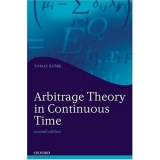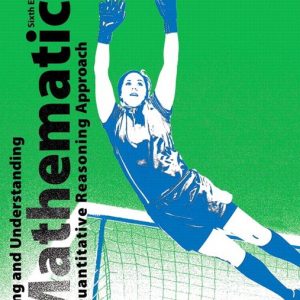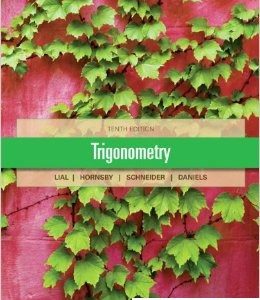This is completed downloadable of Solutions Manual to accompany Arbitrage Theory in Continuous Time 2nd edition 9780199271269
Product Details:
- ISBN-10 : 0199271267
- ISBN-13 : 978-0199271269
- Author:
The second edition of this popular introduction to the classical underpinnings of the mathematics behind finance continues to combine sound mathematical principles with economic applications. Concentrating on the probabilistic theory of continuous arbitrage pricing of financial derivatives, including stochastic optimal control theory and Merton’s fund separation theory, the book is designed for graduate students and combines necessary mathematical background with a solid economic focus. It includes a solved example for every new technique presented, contains numerous exercises, and suggests further reading in each chapter. In this substantially extended new edition Bjork has added separate and complete chapters on measure theory, probability theory, Girsanov transformations, LIBOR and swap market models, and martingale representations, providing two full treatments of arbitrage pricing: the classical delta-hedging and the modern martingales. More advanced areas of study are clearly marked to help students and teachers use the book as it suits their needs.
Table of contents
- 1. Introduction
- 1.1. Problem Formulation
- 2. The Binomial Model
- 2.1. The One Period Model
- 2.1.1. Model Description
- 2.1.2. Portfolios and Arbitrage
- 2.1.3. Contingent Claims
- 2.1.4. Risk Neutral Valuation
- 2.2. The Multiperiod Model
- 2.2.1. Portfolios and Arbitrage
- 2.2.2. Contingent Claims
- 2.3. Exercises
- 2.4. Notes
- 3. A More General One Period Model
- 3.1. The Model
- 3.2. Absence of Arbitrage
- 3.3. Martingale Pricing
- 3.4. Completeness
- 3.5. Stochastic Discount Factors
- 3.6. Exercises
- 4. Stochastic Integrals
- 4.1. Introduction
- 4.2. Information
- 4.3. Stochastic Integrals
- 4.4. Martingales
- 4.5. Stochastic Calculus and the Ito Formula
- 4.6. Examples
- 4.7. The Multidimensional Ito Formula
- 4.8. Correlated Wiener Processes
- 4.9. Exercises
- 4.10. Notes
- 5. Differential Equations
- 5.1. Stochastic Differential Equations
- 5.2. Geometric Brownian Motion
- 5.3. The Linear SDE
- 5.4. The Infinitesimal Operator
- 5.5. Partial Differential Equations
- 5.6. The Kolmogorov Equations
- 5.7. Exercises
- 5.8. Notes
- 6. Portfolio Dynamics
- 6.1. Introduction
- 6.2. Self-financing Portfolios
- 6.3. Dividends
- 6.4. Exercise
- 7. Arbitrage Pricing
- 7.1. Introduction
- 7.2. Contingent Claims and Arbitrage
- 7.3. The Black-Scholes Equation
- 7.4. Risk Neutral Valuation
- 7.5. The Black-Scholes Formula
- 7.6. Options on Futures
- 7.6.1. Forward Contracts
- 7.6.2. Futures Contracts and the Black Formula
- 7.7. Volatility
- 7.7.1. Historic Volatility
- 7.7.2. Implied Volatility
- 7.8. American options
- 7.9. Exercises
- 7.10. Notes
- 8. Completeness and Hedging
- 8.1. Introduction
- 8.2. Completeness in the Black-Scholes Model
- 8.3. Completeness-Absence of Arbitrage
- 8.4. Exercise
- 8.5. Notes
- 9. Parity Relations and Delta Hedging
- 9.1. Parity Relations
- 9.2. The Greeks
- 9.3. Delta and Gamma Hedging
- 9.4. Exercises
- 10. The Martingale Approach to Arbitrage Theory
- 10.1. The Case with Zero Interest Rate
- 10.2. Absence of Arbitrage
- 10.2.1. A Rough Sketch of the Proof
- 10.2.2. Precise Results
- 10.3. The General Case
- 10.4. Completeness
- 10.5. Martingale Pricing
- 10.6. Stochastic Discount Factors
- 10.7. Summary for the Working Economist
- 10.8. Notes
- 11. The Mathematics of the Martingale Approach
- 11.1. Stochastic Integral Representations
- 11.2. The Girsanov Theorem: Heuristics
- 11.3. The Girsanov Theorem
- 11.4. The Converse of the Girsanov Theorem
- 11.5. Girsanov Transformations and Stochastic Differentials
- 11.6. Maximum Likelihood Estimation
- 11.7. Exercises
- 11.8. Notes
- 12. Black-Scholes from a Martingale Point of View
- 12.1. Absence of Arbitrage
- 12.2. Pricing
- 12.3. Completeness
- 13. Multidimensional Models: Classical Approach
- 13.1. Introduction
- 13.2. Pricing
- 13.3. Risk Neutral Valuation
- 13.4. Reducing the State Space
- 13.5. Hedging
- 13.6. Exercises
- 14. Multidimensional Models: Martingale Approach
- 14.1. Absence of Arbitrage
- 14.2. Completeness
- 14.3. Hedging
- 14.4. Pricing
- 14.5. Markovian Models and PDEs
- 14.6. Market Prices of Risk
- 14.7. Stochastic Discount Factors
- 14.8. The Hansen-Jagannathan Bounds
- 14.9. Exercises
- 14.10. Notes
- 15. Incomplete Markets
- 15.1. Introduction
- 15.2. A Scalar Nonpriced Underlying Asset
- 15.3. The Multidimensional Case
- 15.4. A Stochastic Short Rate
- 15.5. The Martingale Approach
- 15.6. Summing Up
- 15.7. Exercises
- 15.8. Notes
- 16. Dividends
- 16.1. Discrete Dividends
- 16.1.1. Price Dynamics and Dividend Structure
- 16.1.2. Pricing Contingent Claims
- 16.2. Continuous Dividends
- 16.2.1. Continuous Dividend Yield
- 16.2.2. The General Case
- 16.3. Exercises
- 17. Currency Derivatives
- 17.1. Pure Currency Contracts
- 17.2. Domestic and Foreign Equity Markets
- 17.3. Domestic and Foreign Market Prices of Risk
- 17.4. Exercises
- 17.5. Notes
- 18. Barrier Options
- 18.1. Mathematical Background
- 18.2. Out Contracts
- 18.2.1. Down-and-Out Contracts
- 18.2.2. Up-and-Out Contracts
- 18.2.3. Examples
- 18.3. In Contracts
- 18.4. Ladders
- 18.5. Lookbacks
- 18.6. Exercises
- 18.7. Notes
- 19. Stochastic Optimal Control
- 19.1. An Example
- 19.2. The Formal Problem
- 19.3. The Hamilton-Jacobi-Bellman Equation
- 19.4. Handling the HJB Equation
- 19.5. The Linear Regulator
- 19.6. Optimal Consumption and Investment
- 19.6.1. A Generalization
- 19.6.2. Optimal Consumption
- 19.7. The Mutual Fund Theorems
- 19.7.1. The Case with No Risk Free Asset
- 19.7.2. The Case with a Risk Free Asset
- 19.8. Exercises
- 19.9. Notes
- 20. Bonds and Interest Rates
- 20.1. Zero Coupon Bonds
- 20.2. Interest Rates
- 20.2.1. Definitions
- 20.2.2. Relations between df(t,T), dp(t,T), and dr(t)
- 20.2.3. An Alternative View of the Money Account
- 20.3. Coupon Bonds, Swaps, and Yields
- 20.3.1. Fixed Coupon Bonds
- 20.3.2. Floating Rate Bonds
- 20.3.3. Interest Rate Swaps
- 20.3.4. Yield and Duration
- 20.4. Exercises
- 20.5. Notes
- 21. Short Rate Models
- 21.1. Generalities
- 21.2. The Term Structure Equation
- 21.3. Exercises
- 21.4. Notes
- 22. Martingale Models for the Short Rate
- 22.1. Q-dynamics
- 22.2. Inversion of the Yield Curve
- 22.3. Affine Term Structures
- 22.3.1. Definition and Existence
- 22.3.2. A Probabilistic Discussion
- 22.4. Some Standard Models
- 22.4.1. The Vasicek Model
- 22.4.2. The Ho-Lee Model
- 22.4.3. The CIR Model
- 22.4.4. The Hull-White Model
- 22.5. Exercises
- 22.6. Notes
- 23. Forward Rate Models
- 23.1. The Heath-Jarrow-Morton Framework
- 23.2. Martingale Modeling
- 23.3. The Musiela Parameterization
- 23.4. Exercises
- 23.5. Notes
- 24. Change of Numeraire
- 24.1. Introduction
- 24.2. Generalities
- 24.3. Changing the Numeraire
- 24.4. Forward Measures
- 24.4.1. Using the T-bond as Numeraire
- 24.4.2. An Expectation Hypothesis
- 24.5. A General Option Pricing Formula
- 24.6. The Hull-White Model
- 24.7. The General Gaussian Model
- 24.8. Caps and Floors
- 24.9. Exercises
- 24.10. Notes
- 25. LIBOR and Swap Market Models
- 25.1. Caps: Definition and Market Practice
- 25.2. The LIBOR Market Model
- 25.3. Pricing Caps in the LIBOR Model
- 25.4. Terminal Measure Dynamics and Existence
- 25.5. Calibration and Simulation
- 25.6. The Discrete Savings Account
- 25.7. Swaps
- 25.8. Swaptions: Definition and Market Practice
- 25.9. The Swap Market Models
- 25.10. Pricing Swaptions in the Swap Market Model
- 25.11. Drift Conditions for the Regular Swap Market Model
- 25.12. Concluding Comment
- 25.13. Exercises
- 25.14. Notes
- 26. Forwards and Futures
- 26.1. Forward Contracts
- 26.2. Futures Contracts
- 26.3. Exercises
- 26.4. Notes
- A. Measure and Integration
- A.1. Sets and Mappings
- A.2. Measures and Sigma Algebras
- A.3. Integration
- A.4. Sigma-Algebras and Partitions
- A.5. Sets of Measure Zero
- A.6. The L[superscript p] Spaces
- A.7. Hilbert Spaces
- A.8. Sigma-Algebras and Generators
- A.9. Product measures
- A.10. The Lebesgue Integral
- A.11. The Radon-Nikodym Theorem
- A.12. Exercises
- A.13. Notes
- B. Probability Theory
- B.1. Random Variables and Processes
- B.2. Partitions and Information
- B.3. Sigma-algebras and Information
- B.4. Independence
- B.5. Conditional Expectations
- B.6. Equivalent Probability Measures
- B.7. Exercises
- B.8. Notes
- C. Martingales and Stopping Times
- C.1. Martingales
- C.2. Discrete Stochastic Integrals
- C.3. Likelihood Processes
- C.4. Stopping Times
- C.5. Exercises
- References
- Index
People Also Search:
arbitrage theory in continuous time 2nd edition
arbitrage theory in continuous time solution manual





